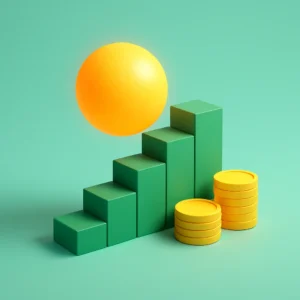What is an International Bank Account Number, IBAN?
IBAN is a universal numbering system used to help identify an international bank account. IBAN uses a two-digit country code followed by 34 alphanumeric characters to identify an individual, their country, bank, and bank account number.
An IBAN is a critical piece of information in international banking, serving at least three vital functions when an individual makes or receives international payments between banks.
- Denote the bank’s country to which a payment is sent.
- Provide the exact account number to which the money will be sent.
- Allows financial institutions an effective and easy way to check the accuracy of an account’s details, ensuring a successful transfer will be made before initiating.
Before IBAN was adopted, European countries had various bank account number formats, leading to cross-border transactions errors.
In 1997, ISO (the International Organization for Standardization) proposed a new standard for the global movement of money, known as ISO 13616-2:2007.
The result has been fewer errors in international wire transfers and improved accessibility for people to send money from one country to another. However, IBAN does not address foreign exchange rates.
Does the United States Participate in the IBAN System?
The US does not currently use IBANs and instead uses ABA routing numbers for domestic transfers and SWIFT codes for international transfers.
How Does IBAN Differ From SWIFT Code?
The critical difference between an IBAN and a SWIFT code lies in what they’re used to identify. Unlike an IBAN, a SWIFT code only identifies a bank and not the account number.
Before the international standardization of IBAN and SWIFT codes, payments between countries would frequently end up in the wrong location. Payments made in error, or ended up in the wrong places, would often require extra expense to correct.
One of the significant benefits of SWIFT is the amount of information it transfers between institutions: an individual’s debit or credit amounts, the account status and specific information related to the money transfer.
How Does IBAN Differ From BIC?
The network to which international transfers are sent is SWIFT, and the codes are BIC (Bank Identifier Code). Whereas an IBAN identifies a bank’s country and a precise account number within that institution, a BIC breaks down into three specific elements to aid a transaction: a 4-letter bank code, a 2-letter country code, and a branch identifier. BIC is critical in helping to avoid post-transaction costs to fix a misdirected payment.
How Does an IBAN Appear?
An IBAN has a series of alphanumeric characters, with the same format for every country, although the number of digits may vary. In general, an IBAN is divided into the following codes (sometimes in the order presented, although it does vary by country):
- Country code
- Check digit code
- Bank identifier code
- Branch code
- Account number
The last three collectively comprise the Basic Bank Account Number (BBAN).
What is the IBAN Registry?
The IBAN registry is a catalog of countries compliant with the most recent standards (ISO 13616). Published by SWIFT, the registry contains details of each country’s IBAN format. For example, you’ll find the following information for Hungary:
- The nation’s country code is HU
- Each IBAN is 28 characters
- The BBAN length is 24 characters
- Bank identifier is three characters
- Branch identifier is four characters
- Additionally, Hungary is a member of SEPA
What Is the Difference Between IBAN and SEPA?
SEPA, or the Single Euro Payment Area, is a payment network in Europe for digital transfers of Euros across 28 countries within the European Union, plus Norway, Iceland, Switzerland, and Liechtenstein.
By comparison, over 60 countries use the IBAN system, which can send payments in multiple currencies. Since its adoption in Europe, countries in the Caribbean and the Middle East have also begun using the IBAN system.
One Option
Using IBAN to send money to participating banks is convenient for transferring funds. But remember, not all banks have an IBAN, so you’ll need to use a different method in some cases.












